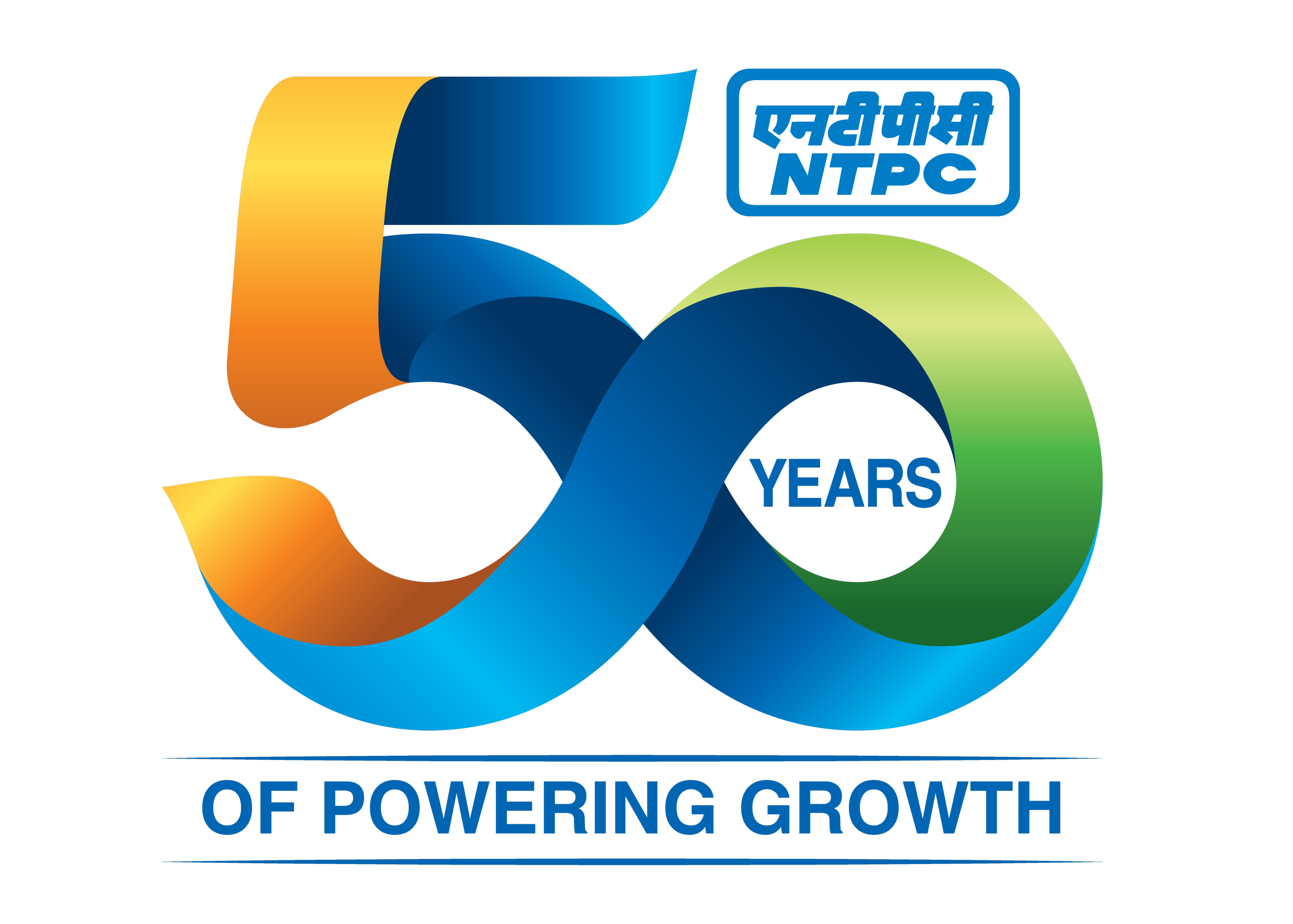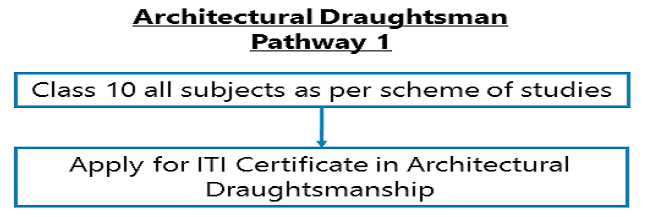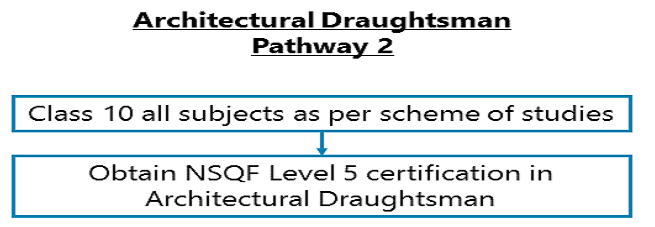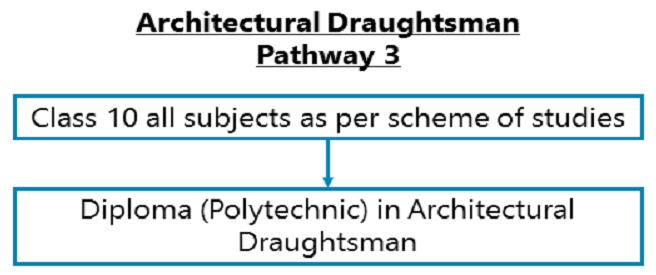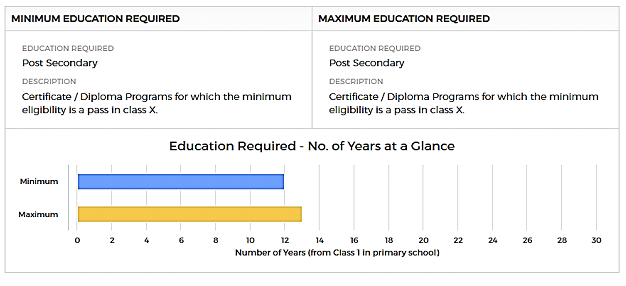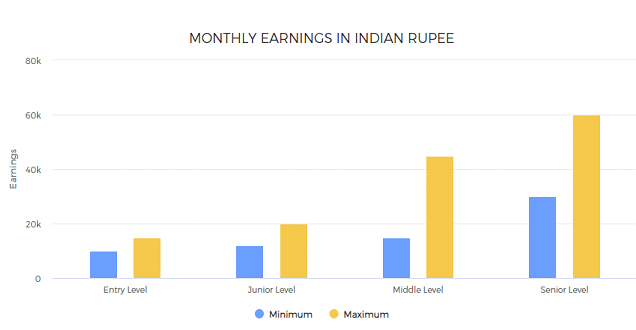Architectural Draughtsman
Entry Level Qualification
10
Career Fields
Architecture & Planning
For Specially Abled







Career Entrance Exam
UPCET AKTU, UPCET MMMUT, OJEE, CUET UG, CUET PG, COMEDK, JEE MAIN BARCH, JEE MAIN BPLAN, TANCET MTECH/MARCH, MHTCET, KCET, WBJEE, KEAM, AP EAPCET, NATA
About Career
As an Architectural Draughtsman, you will be specialized in creating technical drawings or models of homes, buildings, offices, and schools, among others, by using Computer-Aided Design and Drafting Software. You will be studying notes, sketches and other engineering data of homes, buildings, offices, schools, and parks, etc. which need to be constructed. You will be turning the preliminary sketches of architects, engineers, and contractors into technical drawings or blueprints. You will be working under the supervision of the engineers or architects.
As an Architectural Draughtsman, you will be working/drawing the sketches of the homes, buildings, offices, schools or other required constructions as per the directions received from Architect. You will be responsible for getting the sketches approved and alter them if required as per the suggestions of the Architect. You might be responsible for preparing designs and rendering them in the color of monochrome. An Architectural Draughtsman might work as a Draughtsman Civil.
As an Architectural Draughtsman, you will specify the technical details of a constructed project, which also includes the materials used as well as the step-by-step procedures that will be followed for the construction in the plans. You will be using mathematics for creating models to scale so that contractors, engineers, and others can read the drawings and understand what to do for turning the design into something real. You will be responsible for providing the dimensions and other important measurements in these scale drawings as well as in the models.
An Architectural Draughtsman and an Architect, both are different professions but these two are related to each other. An architect is a designer who designs building and new interior spaces by sketching, using software or sometimes they simply describe their ideas, and the one who converts these ideas into a model or technical drawings are known as Architectural Draughtsman.
Key Roles and Responsibilities
As an Architectural Draughtsman, you will have the following roles and responsibilities:
1. You will need to draw various types of Architectural symbols for materials, doors, windows, electrical fitting and fixtures, and plumbing fittings, etc.
2. You will need to draw different types of freehand sketches such as trees, plants, monument, landscape drawing with pencil rendering, sketches of cubes, cone, sphere, cylinder, prism, etc.
3. You will need to illustrate the design procedure to the clients, to ensure that they are satisfied or not.
4. You need to analyze and comply with safe working practices and environmental regulations.
5. You will need to produce designs, working drawings, models, charts, forms, and records by operating Computer-Aided Drafting (CAD) equipment and conventional drafting station.
6. You will need to alter the design and prepare the final draft after getting the necessary changes done as per the feedbacks or requirement.
Career Entry Pathway
Class 10 all subjects as per scheme of studies –Apply for ITI Certificate in Architectural Draughtsmanship
After class 10, you can go for an ITI certificate course in Architectural Draughtsmanship.
Class 10 all subjects as per scheme of studies – Obtain NSQF Level 5 certification in Architectural Draughtsman
After class 10, you may obtain NSQF (National Skills Qualification Framework) Level 5 certification in Architectural Draughtsman from any vocational institute or other similar institutes. This certification program is of 4,160 hours (a two-year program).
Class 10 all subjects as per scheme of studies -Diploma (Polytechnic) in Architectural Draughtsman
After class 10, you may apply for a Diploma (Polytechnic) in Architectural Draughtsman. This Diploma program is of 3 years of duration.
Required Qualification & Competencies
After completing class 10, you can:
1. Apply for ITI Certificate in Architectural Draughtsmanship,
2. Obtain NSQF Level 5 certification in Architectural Draughtsman,
3. Polytechnic Diploma in Architectural Draughtsman.
Interests
1. Artistic: You should have interests for Artistic Occupations. Artistic occupations mostly involve working with creative ideas, art and designs. These occupations involve abstract or conceptual thinking, creative self-expression and often do not follow any set processes or rules for getting things done.
2. Realistic: You should have interests for Realistic Occupations. Realistic occupations involve more practical and hands-on activities than paperwork or office work. Realistic occupations often involve physical activities for getting things done using various tools and equipment.
3. Enterprising: You should have interests for Enterprising Occupations. Enterprising occupations involve taking initiatives, initiating actions, and planning to achieve goals, often business goals. These involve gathering resources and leading people to get things done. These require decision making, risk-taking, and action orientation.
Knowledge
1. Technical and Engineering Design: Knowledge of various techniques, methods, specifications and tools for creating, developing and laying out designs of various machines, equipment, devices, manufacturing plants, structures, systems and processes. This includes developing blueprints, drawing, and models.
2. Design: Knowledge of various techniques, methods, and specifications for creating and developing designs for buildings, houses, or other structures such as highways and roads.
3. Civil construction: Knowledge of materials, methods, and the tools involved in the construction or repair of houses, buildings, or other structures such as industrial factories, dams, bridges, highways and roads.
Skills
1. Active Learning: Focused and continuous learning from various sources of information, observation and otherwise for application in getting work done.
2. Active Listening: Giving full attention to what other people are saying, understanding the points being made by others, asking questions, etc.
3. Critical Thinking: Skills in analysis of complex situations, using logic and reasoning to understand the situations and take appropriate actions or make interpretations and inferences.
4. Judgment and Decision Making: Skills in considering the pros and cons of various decision alternatives; considering costs and benefits; taking appropriate and suitable decisions.
5. Reading Comprehension: Skills in understanding written sentences and paragraphs in work related documents.
6. Problem Solving: Skills in analysis and understanding of problems, evaluating various options to solve the problems and using the best option to solve the problems.
7. Technical Design and Drawing: Skills in creating and developing designs and drawings for various structures, machines, equipment, and devices.
8. You may need skills in using various software such as Auto CAD or AutoCAD LT software, BIM Software (for preparing 3D model), AutoCAD 2D and 3D CAD software, etc.
Abilities
1. Abstract Reasoning: The ability to understand ideas which are not expressed in words or numbers; the ability to understand concepts which are not clearly expressed verbally or otherwise.
2. Deductive Reasoning: The ability to apply general rules and common logic to specific problems to produce answers that are logical and make sense. For example, understanding the reasons behind an event or a situation using general rules and common logic.
3. Flexibility of Closure: The ability to identify or detect a pattern (a figure, object, word, or sound) that is hidden among other distracting materials.
4. Fluency of Ideas: The ability to come up with a number of ideas about a topic (the number of ideas is important, not their quality, correctness, or creativity).
5. Inter-Personal: The ability to build and maintain good relationships with others at workplaces and elsewhere.
6. Numerical Reasoning: The ability to add, subtract, multiply, divide, and perform other basic numerical calculations correctly.
7. Originality: The ability to come up with unusual or innovative ideas about a given topic or situation, or to develop creative ways to solve a problem.
8. Visualization: The ability to imagine how something will look after it is moved around or when its parts are moved or rearranged.
9. Written Comprehension: The ability to read and understand information and ideas presented in writing.
Personality
1. You are always or mostly organized in your day-to-day life and activities.
2. You are always imaginative or in most situations.
3. You always prefer to experience new things and have new experiences or you mostly do.
4. You can always act independently or could do so in most situations.
5. You remain calm in difficult situations sometimes but some other times you are anxious.
6. You are always practical or in most situations.
Career - Job Opportunities & Profiles
After your Certificate Course/ Polytechnic Diploma Course, you can get many jobs as a Tracer Junior Architectural Draughtsman, and Assistant Architectural Draughtsman.
These are some of the industries that will require your services:
1. Construction / Engineering / Cement / Metals
2. Architecture / Interior Design
3. Government / Defence / Railways
4. Real Estate / Property
Work Environment
You will be working in several industries, some of which include government and private administration, commercial and non-commercial construction, and technical services. You will be working in challenging situations while doing both technical and creative work. You will be working for around 35-40 hours per week. You will develop reports and drawings. For drawings, you will be spending many hours on different iterations over CAD. You will be working with architectures and engineers. Most of you will work full time with regular office hours. However, many firms allow architectural draftsman to work from home too occasionally.
CAREER GROWTH
You can start your career as a tracer or a trainee and then can grow as a Junior/Assistant Architectural Draughtsman. You may advance within three to five years to become Senior Architecture Draughtsman, after gaining skills and ability as a Junior Architecture Draughtsman. You may also grow to the supervisory role if you having leadership abilities and do outstanding work. However, you can also continue your education and advance into an architecture job or can do some engineering courses, which will transfer you to engineering jobs.
Salary Offered
1. Salaries vary according to job profiles and the kind of facilities you get to work at.
2. In the entry-level jobs: You may expect to get about Rs. 10,000– Rs.15,000 per month.
3. Salaries increase with your work experience and as you get promoted.
4. In junior-level roles, you can expect to earn about Rs. 12,000 - 20,000 or more per month.
5. In the mid-level jobs, with 6-12 years of work experience, you may expect to get about Rs. 15,000– Rs.45, 000 per month.
6. In the senior-level jobs, with 12-15 years of work experience, you may expect to get about Rs. 30,000 – Rs.60, 000 per month or even more.
MONTHLY EARNINGS IN INDIAN RUPEE
1. Entry level: 0 - 2 years of work experience
2. Junior Level: From 1 to 12 years of work experience
3. Mid-Level: From 5 to 20+ years of work experience
4. Senior Level: From 10 to 25+ years of work experience (there could be exceptions in some high-end technical, financial, engineering, creative, management, sports, and other careers; also in the near future, people will reach these levels much faster in many careers and in some careers, these levels will have no meaning as those careers will be completely tech skill driven such as even now, there is almost no level in a Cyber Security Expert’s job).
Work Activities
As an Architectural Draughtsman, you will be involved in the following work activities:
1. Analysing and interpreting data and information: Analysis of data and information to find facts, trends, reasons behind situations, etc.; interpretation of data to aid in decision making.
2. Calculating and computing: Calculating or computing using various mathematical formula and functions using computers or otherwise; doing financial or commercial calculations or computations.
3. Communicating with co-workers and others: Communicating with people in writing, verbally or otherwise inside your workplace and various other people who have professional relationships with your place of work including vendors, government officials, etc. or with people at large.
4. Creative thinking: Developing new ideas, concepts, innovative solutions to problems, newer ways of getting things done, designing products and services, creating work of art and craft, etc.
5. Decision making and problem-solving: Analysis of data and information; evaluation of alternative decisions and results of decisions; taking the right decisions and solving problems.
6. Drawing, drafting, laying out and specifying objects, equipment, devices, tools, and systems: Creating and developing designs, drawings, layouts and specifications about how to construct, manufacture, assemble, build, use, and maintain various equipment, devices, tools, and systems.
7. Estimating quantity, cost, time and resources: Estimating sizes, volumes, distance, and quantity; estimating and determining the time, costs, and resources; estimating materials required to perform a task.
8. Getting Information and learning: Observing, hearing, reading, using computers, or otherwise obtaining information and learning from it.
9. Organizing, planning and prioritizing tasks: Planning and organizing tasks in order to achieve work goals; prioritizing tasks to achieve goals and making the best use of the time available.
10. Providing advices and consultation to others: Giving advices or consultation to others about various issues, conceptual matters, know-hows, scientific matters, products or services.
11. Updating and using relevant knowledge: Keeping updated with the latest knowledge relevant to your fields of work and use of the relevant knowledge in getting things done.
12. Using computers for work: Using computers for day-to-day office work; using computer software for various applications in day-to-day professional work; entering data and process information; for writing.
13. Working in a team: Working in a team of people; developing a team; maintaining professional relationships among team members.
Future Prospects
The future for this career pathway looks fair. The appetite for infrastructure and the real estate sector in India has boomed in the last few years and this has attracted National and International players alike. By 2030, the market size will be USD 1 trillion. By 2025, Real estate is expected to contribute 13% of Indian GDP. By 2019, the real estate in India will be 3.7 billion square feet while adding 200 million square feet each year. The emergence of nuclear families, urbanization and rising incomes are primary factors for the growth in this sector. 70% of the real estate will be contributed by urban areas.
The Government of India has also taken several initiatives for encouraging the development in this sector, along with the governments of other states. A Smart City Plan Project under this initiative (in which there is a plan to build 100 smart cities), is on the major focus and prime opportunity for Real Estate Companies. Interestingly Urban population is still 30% of the total population so more it increases more increase will be seen in real estate.
No doubt such numbers indicate a strong prospect for Architectural Draughtsman Career. Real Estate Developers for meeting the above mentioned growing needs and for managing different projects across cities will require someone to draft a layout or sketch the layout of the buildings. But we can’t ignore the current slump situation of the real estate sector. There is a server crisis in this sector currently. So we can say that in the short term and maybe in the medium term the growth prospectus could be slow, but for the very long term, it could be good as per the above-mentioned data statistics.
Future Prospects Indicator Future Prospects at a Glance Current Long Term Very Long Term Highly Negative Moderately Negative Somewhat Negative No Change Slow Growth Moderate Growth High Growth Very High Growth
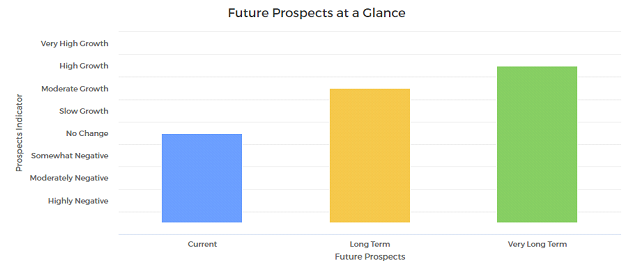
FUTURE PROSPECTS AT A GLANCE
